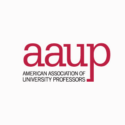![]() Once again, this year The Journal of Blacks in Higher Education has completed its survey of admissions offices at the nation’s highest-ranked research universities. For the 29th consecutive year, we have calculated and compared the percentages of Black/African-American students in this fall’s entering classes. We also compared this year’s numbers to the previous year and, where possible, note differences in acceptances rates for Black students compared to the overall admissions pool.
Once again, this year The Journal of Blacks in Higher Education has completed its survey of admissions offices at the nation’s highest-ranked research universities. For the 29th consecutive year, we have calculated and compared the percentages of Black/African-American students in this fall’s entering classes. We also compared this year’s numbers to the previous year and, where possible, note differences in acceptances rates for Black students compared to the overall admissions pool.
We would like to make a few comments before we present this year’s data.
When JBHE started this survey nearly three decades ago, our aim was to create an annual tabulation that would serve as a vehicle where our nation’s leading universities would compete to move up the ladder or our rankings of Black first-year students. JBHE has always maintained that the Black presence at our nation’s top universities and colleges is an important barometer of educational equality.
Over the past decades, the progress has been substantial. In 2004, only two of the nation’s highest-ranked universities had incoming classes that were more than 10 percent Black. This year there are 18 high-ranked universities for which we have data that have an entering class that is more than 10 percent Black. (We did not receive responses from Harvard or Duke, both of which in all probability have entering classes that are at least 10 percent Black. Harvard reported that nearly 16 percent of the students that it admitted were Black.) This year there are 14 high-ranking universities that have an entering class that is at least 12 percent Black. A year ago there were eight. In 2004, there were none.
Yet, despite this progress, colleges and universities are becoming increasingly reluctant to provide data to JBHE, particularly on their acceptance rate of Black students. When we began, almost all of the major universities and all of the leading liberal arts colleges were willing to supply data on Black student acceptance rate and Black student yield. That is no longer the case.
Several years ago, Harvard University told JBHE that it would no longer participate in our survey. Last December, Princeton University issued a statement that read in part “we have now made the decision not to release admission data during the early action, regular decision and transfer admission cycles.” Princeton did reply to our survey after its application deadline.
But other admissions officials believe that full disclosure can be beneficial. Donald Bishop, associate vice president for undergraduate enrollment at the University of Notre Dame, told JBHE that “your survey is very important and highly reviewed by our trustees, faculty, and other groups that are assessing Notre Dame. I am grateful that you continue to use what I believe is the most accurate form of including students with an African identity. We are always delighted to be included and always working hard to improve our outcomes.”
Undoubtedly, the recent litigation involving the admissions practices of Harvard University concerning Asian American students – that will now be heard by the Supreme Court – appears to have struck a nerve in higher education circles. Colleges and universities increasingly seem to want to hold their cards close to their vests and not add fuel to efforts to challenge affirmative action admissions policies. They may also want to avoid having to defend their admissions policy in court at considerable expense.
Unquestionably, public and private litigation threats to affirmative action policies in college admissions have been a factor in producing this sensitivity. With this in mind, admissions officers — who, we believe, on the whole, are solidly supportive of affirmative action — have apprehensions when statistics on Black admissions are made available to the public. There are standard concerns too that racial conservatives on faculties and trustees may interpret the figures as suggesting a so-called dumbing down of academic standards and a favoring of “unqualified” Blacks over perhaps more qualified Whites. Probably, more importantly, these research universities may be unwilling to alienate conservative alumni and donors who come to believe that the university is giving what they believe to be unfair advantages to Blacks and members of other underrepresented groups.
JBHE does not believe there are sinister motives for this lack of disclosure. Generally, we believe that most major universities and high-ranking liberal arts colleges are dedicated to increasing diversity so that their student populations mirror the nation’s population. Indeed, the figures on Black student enrollments that have risen dramatically over the years tend to show this commitment.
As a result of this hesitancy to report acceptance rates and yields, in recent years JBHE has published annual tables where a great deal of the data was listed as “Not Available.” (See last year’s survey table here.) Going forward, we will report what information we are able to obtain through our survey of admissions departments, official institutional statistics, or published reports. We do not make judgments on why a particular college or university chooses not to participate. But we continue to believe that providing Black students and their families with information relating to their prospects for admission at our top universities is important. We will continue to request this information in the hope that universities will be more forthcoming in the future if and when the threat of litigation subsides.
Black Students in the Class of 2025
For nine years in a row, Columbia had the highest percentage of Black first-year students among the highest-ranking universities in the nation. Four years ago, Columbia finished in a virtual dead heat for first place but was narrowly edged out by Washington University for the top spot. Again in 2017, Columbia finished in second place with an entering class that was 13.9 percent Black.
In 2018, Columbia University once again sat atop the JBHE rankings. Blacks made up 15.5 percent of the 2018 entering class. At that time, it was the highest percentage of Black students in the entering class of a major research university in the 29 years of the JBHE survey. In 2019, Columbia retained the top spot. There were 212 Black students in the entering class. They make up 15.2 percent of the first-year students.
A year ago Columbia dropped to second behind Princeton University. But this year Columbia is once again on top with an entering class that is 17.5 percent Black. This is the highest percentage achieved among the nation’s leading research universities in the history of our survey.
Enrollments in the Class of 2025
School | Total Enrollment | Black Enrollment | % Black |
|---|---|---|---|
| Columbia University | 1511 | 264 | 17.5 |
| Johns Hopkins University | 1326 | 205 | 15.5 |
| Vanderbilt University | 1626 | 235 | 14.5 |
| Brown University | 1707 | 242 | 14.2 |
| Princeton University | 1290 | 180 | 14.0 |
| Emory University | 1501 | 205 | 13.7 |
| Massachusetts Institute of Technology | 1178 | 157 | 13.3 |
| Cornell University | 3718 | 490 | 13.2 |
| University of Southern California | 3668 | 461 | 12.6 |
| Washington University | 1986 | 244 | 12.3 |
| University of North Carolina at Chapel Hill | 4688 | 569 | 12.1 |
| University of Pennsylvania | 2418 | 290 | 12.0 |
| Yale University | 1789 | 215 | 12.0 |
| Northwestern University | 2086 | 250 | 12.0 |
| Tufts University | 1805 | 210 | 11.6 |
| Stanford University | 2126 | 246 | 11.6 |
| University of Chicago | 2053 | 205 | 10.0 |
| Dartmouth College | 1228 | 122 | 10.0 |
| Rice University | 1226 | 120 | 9.8 |
| University of Notre Dame | 2073 | 197 | 9.5 |
| University of Virginia | 3890 | 343 | 8.8 |
| Carnegie Mellon University | 1896 | 152 | 8.0 |
| Georgetown University | 1601 | 126 | 7.9 |
| Wake Forest University | 1442 | 107 | 7.4 |
| University of Michigan* | 6883 | 309 | 4.5 |
| California Institute of Technology | 270 | 12 | 4.4 |
| University of California, Berkeley | 6998 | 275 | 3.9 |
Source: JBHE Research Department
Three years ago, Johns Hopkins University in Baltimore had an entering class that was 11 percent Black. Last year, 13.9 percent of its entering class was Black, placing the university in fifth place in our survey. This year, Johns Hopkins is in the second spot with a first-year class that is 15.5 percent Black.
Four years ago, for the first time in the history of our survey, Vanderbilt University in Nashville, Tennessee, had the highest percentage of Black students in its entering class of any of the high-ranking research universities in our survey. There were 226 Black first-year students at Vanderbilt, making up 14.1 percent of the entering class. This year, Vanderbilt is in third place in the overall rankings with an entering class that is 14.5 percent Black. Vanderbilt held the third spot last year as well.
Brown University in Providence, Rhode Island moved up to fourth place this year after ranking ninth last year. The Black percentage of Brown’s entering class jumped from 11.8 percent to 14.2 percent.
The Massachusetts Institute of Technology has made huge progress over the past decade in increasing Black enrollment. For the class that entered in the fall of 2013, MIT ranked near the bottom of our survey. Since that time it has ranked as high as a tie for second and this year sits in the fifth position with an entering class that is 13.3 percent Black, nearly double what it was seven years earlier.
The progress of the Ivy League schools over the past decade in admitting Black students has been impressive. In 2006, Columbia University had the highest percentage of Black first-year students at 9.6 percent. If we assume Harvard’s entering class is at least 10 percent Black, this year, seven of the eight Ivy League schools have entering classes that are 10 percent Black or higher.
Two years ago, there were only six African American students in the entering class at the California Institute of Technology. They made up 2.5 percent of the first-year class. This year, there are 12 Black students making up 4.4 percent of the entering class.
The other two universities at the lower end of the rankings are public institutions in states that have laws prohibiting the consideration of race in college admissions. The University of California, Berkeley has an entering class that is 3.9 percent Black, up from 2.8 percent two years ago. The percentage of Black first-year students at Berkeley remains significantly below the level of Black enrollments that existed before that state enacted a ban on race-sensitive admissions.
The same is true at the University of Michigan. There, Blacks make up 4.5 percent of the students in the first-year class. The good news is that this is up from 3.4 percent a year ago.
A Note on Methodology
Before we continue with the results, it is important to mention how the U.S. Department of Education collects data on the race of undergraduates. Before a change was made several years ago, students who reported more than one race (including African American) were included in the figures for Black students. This is no longer the case. Thus, students who self-identify as biracial or multiracial with some level of African heritage are no longer classified as Black by the Department of Education.
JBHE surveys have always asked respondents to include all students who self-identify as having African American or African heritage including those who are actually from Africa. JBHE has always maintained that biracial, multiracial, and Black students from Africa add to the diversity of a college campus. And including these students in our figures offers college-bound Black students a better idea of what they can expect at a given college or university. In order that we can compare our current data to past JBHE surveys, we have continued to ask colleges and universities to include all students who identify themselves as having African American or African heritage. Those who conform to Department of Education guidelines and do not include foreign Black students or biracial students are indicated with an asterisk in the accompanying table.
One-Year Gainers and Losers in Black First-Year Enrollments at High-Ranking Research Universities
We have data on first-year enrollments of Black students at 25 high-ranking research universities for both 2020 and 2021. All but four showed increases in the number of Black students.
But this year’s data must be treated with some caution given the extraordinary circumstances faced by colleges and universities as a result of the pandemic. Overall enrollments were down at most schools in the 2020-21 academic year, and studies have shown that Black enrollments suffered to a greater degree than the overall student population. Also, many students who were scheduled to enroll in the fall of 2020, took a gap year to ride out the pandemic and enrolled instead this fall. For example, at Yale University, 330 students accepted into the class of 2024 deferred their matriculation until this year.
Six universities showed increases in Black first-year students of more than 40 percent. At Carnegie Mellon University, the number of Black students nearly doubled.
Don Blanchard at Notre Dame reports that the nearly 45 percent increase in Black first-year students at his university was in part, due to “an elevated effort in recruitment but also a very large expansion of financial aid funding. We have built a stronger aid budget into our annual plans and this allowed us to become even more active in the recruitment area.”
| School | 2020 | 2021 | % Change |
|---|---|---|---|
| Carnegie Mellon University | 80 | 152 | +90.0 |
| Emory University | 133 | 205 | +54.1 |
| University of Southern California | 299 | 461 | +54.1 |
| Washington University | 159 | 244 | +53.5 |
| Tufts University | 141 | 210 | +48.9 |
| University of Notre Dame | 136 | 197 | +44.9 |
| University of Michigan | 235 | 309 | +31.5 |
| Cornell University | 380 | 490 | +28.9 |
| Columbia University | 209 | 264 | +26.3 |
| Northwestern University | 198 | 250 | +26.3 |
| Massachusetts Institute of Technology | 129 | 157 | +21.7 |
| Yale University | 178 | 215 | +20.8 |
| Rice University | 100 | 120 | +20.0 |
| University of California, Berkeley | 232 | 275 | +18.5 |
| Stanford University | 209 | 246 | +17.7 |
| Princeton University | 178 | 180 | +17.7 |
| Dartmouth College | 102 | 122 | +16.4 |
| Brown University | 208 | 242 | +16.3 |
| University of Pennsylvania | 251 | 290 | +15.5 |
| Johns Hopkins University | 180 | 205 | +13.9 |
| University of North Carolina at Chapel Hill | 512 | 569 | +11.1 |
| University of Chicago | 185 | 205 | +10.8 |
| Vanderbilt University | 239 | 235 | -1.7 |
| University of Virginia | 364 | 343 | -5.8 |
| Georgetown University | 143 | 126 | -11.9 |
Source: JBHE Research Department
Black Student Acceptance Rates
As stated earlier, a majority of high-ranking research universities are now unwilling to disclose information on Black student acceptance rates. But we can compare acceptance rate data from 13 universities that did reply with our request for data.
| School | % of Total | % of Blacks | % Difference |
|---|---|---|---|
| Carnegie Mellon University | 13.5 | 23.2 | +9.7 |
| University of Notre Dame | 15.1 | 24.6 | +9.5 |
| University of Virginia | 20.7 | 28.5 | +7.8 |
| Tufts University | 11.4 | 18.0 | +6.6 |
| University of North Carolina at Chapel Hill | 19.2 | 23.8 | +4.6 |
| Brown University | 5.5 | 9.2 | +3.7 |
| Johns Hopkins University | 6.4 | 10.0 | +3.6 |
| University of Southern California | 12.5 | 15.4 | +2.9 |
| Wake Forest University | 25.0 | 27.8 | +2.8 |
| Rice University | 9.5 | 10.9 | +1.4 |
| University of Pennsylvania | 5.9 | 6.9 | +1.0 |
| Georgetown University | 11.9 | 12.4 | +0.5 |
| University of California, Berkeley | 14.5 | 13.1 | -1.4 |
At 12 of the 13 universities that supplied acceptance rate data to JBHE, the Black student acceptance rate was higher than the acceptance rate for all students. In the past, the differences in acceptance rates at some universities were quite large. But now, the differences are usually very narrow. Again, this may reflect a concern over the threat of litigation if there is a perception that a particular racial or ethnic group is receiving an edge in the admissions process.
Four universities reported a Black student acceptance rate that was at least six percentage points higher than the rate for the entire applicant pool. At Brown University, which moved up in the rankings this year, the gap was 3.7 percentage points, but the Black acceptance rate was 1.7 times as high as the overall acceptance rate.












Does this report separate black student-athletes vs. black non student-athletes data at these schools? Black students who are not student-athletes have expressed that black student visibility is different when not a student-athlete. For example, if a school states they have a 10% black enrollment, then to a non-student athlete it may feel more like 5% based on their personal experience and academic path.
No, it does not separate student athletes from the rest of the student body. You make a valid point. Here are links to relevant JBHE posts:
https://jbhe.com/2019/04/black-male-athletes-make-up-a-high-percentage-of-black-male-enrollments-in-power-5-conferences/
https://jbhe.com/2015/12/study-shows-that-athletes-make-up-huge-percentages-of-black-students-at-many-universities/
Thank you for those articles. Also, do you have data on the percentage of black faculty at these universities as well?
Unfortunately, no.
Jah & Jahes love. This is great news! But, I’m very troubled by the fact that UC Berkeley admitted almost 7 thousand students but only 3.9 % are black! There is a problem with those numbers! The Black students will be overwhelmed and minoritized by the other groups and it could diminish their adaptability and success. Blessed love.#1804 #Ayiti #UCBerkekeyAlumni
Have I overlooked Harvard in this listing?
As the text states, Harvard has declined to participate in the survey.
Do we have data on mentoring services that are available at individual institutions that are of service to ease the transition of newly enrolled students? This is so critical as a component of student success.
It’s hard to find. NCES/IPEDs and the Dept of Ed has retention rates and graduation rates. 1st year retention rates are often a good indicator, but finding which colleges do a better job at meeting the needs of Black students is harder to find. CollegeExpress has some helpful guides, and you can see how and where they pull their data. But, it’s limited IMO.
Thank you for this! Would anyone be able to give me some direction or guidance on how to find specific data for Black students via NCES/IPEDs (so confusing!) or anywhere. In the past, I know you can see acceptance rates, enrollment #s, retention, post-grad earnings, etc at every college, but I want to see the data ONLY at the colleges and universities that meet 100% demonstrated need (there are about 60-80). I just can’t figure out how to do it or if it even was via NCES database that I found info.
There are many rankings & lists online (collegeXpress has great ones) that show Black student success, college retention/attainment, important demographic data ,but many lists and ranking I find include colleges that don’t meet 100% demonstrated financial need of low-income student, first-gen, Black students. I work with high-achieving Black students in CA, they apply every year, they get in, and then comes the heartbreak when they look at their financial aid award letter. Not one HBCU in almost 15 years I’ve been doing this work has ever given the students enough financial aid to attend. One student was able to go to Clark Atlanta with extra funding because they were part of a foster youth program. Others to “study exchange” for a semester. Howard and Spelman are the most generous, but it’s never enough for my students to attend without going into massive debt, or working 5 jobs while trying to be a college student. They end up at the private PWI’s or UCs that meet full-need with little to no loans, but I want them to be able to go to their dream colleges, I want them to have the choice to go to an HBCU. okay sorry for this long, frustrated comment